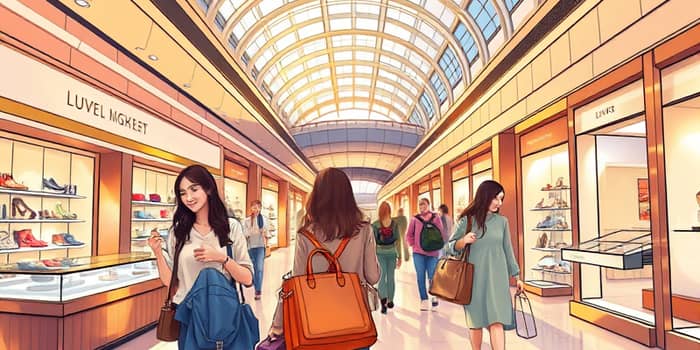
As global travel rebounds with unprecedented momentum, luxury brands are capitalizing on the upswing to reach new heights. The interplay between tourism revival and high-end retail is creating a powerful growth engine that spans continents and consumer segments.
International tourist arrivals climbed by 5% in Q1 2025 compared to Q1 2024, totaling around 300 million travelers. This figure sits approximately 3% above pre-pandemic levels, signaling robust and sustained global travel demand. Tourism export revenues, comprising receipts and transport, surged 11% in real terms to $2.0 trillion in 2024—15% above 2019 levels.
Such momentum has seamlessly extended into 2025, with Asia-Pacific leading the charge at 13% growth in arrivals. Africa follows at 9%, the Americas at 3%, Europe at 2%, and the Middle East at 1%. These figures reflect a broad-based recovery that is lifting luxury spending worldwide.
The luxury travel retail sector, valued at $83.6 billion in 2025, is forecast to surge to $234.1 billion by 2034 at a 12.1% CAGR. Yet, growth varies significantly by region, demanding tailored strategies.
Each region’s performance underscores the importance of localized approaches, from airport infrastructure upgrades in Asia to policy adaptations in Europe and bespoke offerings in the Middle East.
High-net-worth individuals remain the bedrock of luxury spending, while aspirational buyers exhibit caution amid lingering economic uncertainty. Luxury brands are responding with experience-driven luxury consumption that prioritizes travel, hospitality, and wellness over mere product acquisition.
Wellness tourism alone was worth $639 billion in 2017 and grew at a 6.5% annual rate—more than double overall tourism growth. Post-pandemic, travelers are seeking immersive experiences, from private yacht voyages to bespoke cultural retreats, creating fresh avenues for luxury hospitality and retail partnerships.
To harness this tourism-fueled boom, brands are implementing multi-pronged strategies that blend physical and digital realms. Flagship boutiques and pop-up stores in airports and resort destinations have become not just points of sale but experiential showrooms.
Data-driven personalization and advanced CRM systems enable tailored communications that anticipate travelers’ preferences before departure. Brands are also collaborating with hospitality and transport partners to offer exclusive perks, from in-flight previews to VIP lounge showcases.
Central to these efforts is the airport transformation into premium retail hubs. Modern terminals are outfitted with lounges, art installations, and gourmet dining, creating a holistic environment that encourages immersive shopping and exclusive launches.
Despite optimism, challenges persist. The UN Tourism Confidence Index dipped to 114 in 2025 from 120 in 2024, reflecting cautious sentiment amid macroeconomic and geopolitical instability remains. Uneven recovery in markets like South Korea and parts of the Americas underscores vulnerability to local economic headwinds.
Moreover, luxury travelers are increasingly value-conscious. To stand out, brands must deliver not just premium products but distinctive, purpose-driven experiences that resonate on emotional and ethical levels.
The synergy between global tourism and luxury retail is reshaping both industries. Brands that invest in technology, sustainability, and destination partnerships will unlock new growth pockets, from emerging travel hubs to immersive digital platforms.
As airports morph into cultural crossroads and wellness resorts blur the line between retail and retreat, the future of luxury lies in the seamless integration of travel and high-end consumption. By embracing innovation, personalization, and sustainable practices, luxury brands can continue to thrive on the back of global tourism’s remarkable recovery.
References













